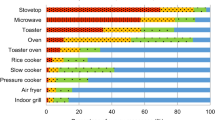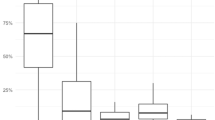Abstract
Home improvement is a popular activity, but one that can also involve exposure to hazardous substances. Paint stripping is of particular concern because of the high potential exposures to methylene chloride, a solvent that is a potential human carcinogen and neurotoxicant. This article presents a general methodology for evaluating the effectiveness of behavioral interventions for reducing these risks. It doubles as a model that assesses exposure patterns, incorporating user time–activity patterns and risk-mitigation strategies. The model draws upon recent innovations in indoor air-quality modeling to estimate exposure through inhalation and dermal pathways to paint-stripper users. It is designed to use data gathered from home paint-stripper users about room characteristics, amount of stripper used, time–activity patterns and exposure-reduction strategies (e.g., increased ventilation and modification in the timing of stripper application, scraping, and breaks). Results indicate that the effectiveness of behavioral interventions depends strongly on characteristics of the room (e.g., size, number and size of doors and windows, base air-exchange rates). The greatest simple reduction in exposure is achieved by using an exhaust fan in addition to opening windows and doors. These results can help identify the most important information for product labels and other risk-communication materials.
This is a preview of subscription content, access via your institution
Access options
Subscribe to this journal
Receive 6 print issues and online access
$259.00 per year
only $43.17 per issue
Buy this article
- Purchase on Springer Link
- Instant access to full article PDF
Prices may be subject to local taxes which are calculated during checkout
Similar content being viewed by others
Author information
Authors and Affiliations
Corresponding author
Rights and permissions
About this article
Cite this article
RILEY, D., SMALL, M. & FISCHHOFF, B. Modeling methylene chloride exposure-reduction options for home paint-stripper users. J Expo Sci Environ Epidemiol 10, 240–250 (2000). https://doi.org/10.1038/sj.jea.7500087
Received:
Accepted:
Published:
Issue Date:
DOI: https://doi.org/10.1038/sj.jea.7500087



